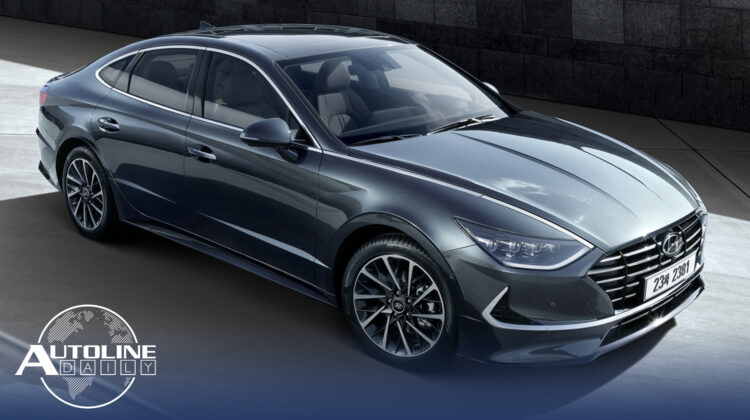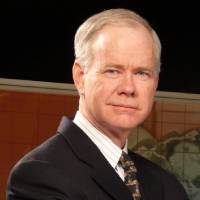
Follow us on social media:
Runtime: 7:15
0:07 Tariffs Could Keep Polestar Out of the U.S.
0:52 EPA Releases 2017 Fleet Fuel Economy
2:42 Why the Japanese Automakers Are Leaving the UK
3:42 Plug-In Trucks Can Have a Big Impact
4:51 Rolls Royce Can’t Build SUVs Fast Enough
5:28 New Mazda CX-30 Fits Between CX-3 & CX-5
6:13 New Hyundai Sonata Revealed
Visit our sponsors to thank them for their support of Autoline Daily: Bridgestone and Dow Automotive Systems.
This is Autoline Daily reporting on the global automotive industry.
TARIFFS COULD BLOCK POLESTAR FROM U.S.
Last week, Polestar, Volvo’s new luxury brand, introduced its first pure electric vehicle, the Polestar 2. But there’s a chance we might not see it or other models in the company’s lineup in the U.S. If President Trump follows through on his threat to slap tariffs on imported vehicles, the company strongly hinted it won’t sell its vehicles in the country, since they will be built in China. Polestar’s CEO told the Financial Times “The business case for bringing cars to the U.S. is highly dependent on the type of tariffs we have.” So if the tariffs happen, don’t expect to see any Polestar’s on the road.
EPA RELEASES 2017 FLEET FUEL ECONOMY
Yesterday we reported that President Trump is putting pressure on automakers to support his rollback of fuel economy regulations. And now his EPA is warning that it will be hard for the industry to meet standards enacted during the Obama Administration. The agency just released its annual fuel economy report that found 2017 model year vehicles averaged nearly 25 MPGs, which is an all-time high, but only slightly ahead of the year before. While all automakers are meeting the current standards, the EPA said most large companies needed credits to hit the goals. And that’s why it’s concerned it will be hard for the industry to cost effectively reach future targets. But, on the other hand, environmentalist argue that the report shows the regulations are working and that the Obama standards should stay in place. The Trump Administration is expected to make a decision about the standards sometime this spring.
Every sports car enthusiast is dying to learn more about the upcoming mid-engine C8 Corvette. GM will not even admit it exists. But freelancer Don Sherman knows more about the car than anyone outside of General Motors. He’s joining us for Autoline After Hours this afternoon, along with the Autoextremist, Peter DeLorenzo. So tune in at 3PM eastern time on our website, Autoline.tv for the inside scoop.
WHY THE JAPANESE ARE LEAVING THE UK
The Brexit mess continues to threaten the existence of the the British motor industry. Now BMW says it’s considering moving production of Mini out of the UK. And Toyota warns it could pull out, too. That comes on the heels of Nissan and Honda saying they’re going to close their UK plants. A key reason why the Japanese are bailing is that the European Union just completed a free trade agreement with Japan. That agreement immediately eliminates all import tariffs on parts and components from Japan. That makes it a lot cheaper for Japanese automakers to make cars in the EU, but not the UK. The agreement also eliminates the import tariff on imported Japanese cars starting at 1% a year for 10 years, when it drops to zero. So it makes all the sense in the world for Japanese automakers to turn their backs on the UK, and move everything to the EU.
PLUG-IN TRUCKS CAN HAVE A BIG IMPACT
Converting pickup trucks into plug-in hybrids can have a big impact on the environment, but can also boost the productivity of fleets that own them. Tod Hynes, the CTO of the company XL, which converts pickups to hybrids made this point at the Green Truck Summit in Indianapolis this week. He says a Prius Prime reduces CO2 emissions by 9 million metric tons a year. But a plug-in Ford F-Series cuts CO2 by 15 million metric tons. Hynes also points out that drivers of these trucks make fewer fuel stops, and over the life cycle of the truck they can save 2 weeks of work time. That may not sound like much, but for companies with big fleets, like UPS, which has tens of thousands of trucks, the productivity impact really adds up.
ROLLS ROYCE CAN’T BUILD SUVs FAST ENOUGH
The SUV craze is now taking over the ultra-luxury segment. Rolls-Royce says its Cullinan utility vehicle is exceeding its expectations, despite a hefty $325,000 starting price tag. The company’s CEO told Bloomberg that production of the SUV is booked solid until the fourth quarter of the year and it’s even doing shifts on Saturday to meet demand. And thanks to its all-wheel drive, the model is finding popularity in Canada and Russia, two markets the company hasn’t traditionally sold well in.
MAZDA CX-30 FITS BETWEEN CX-3 & CX-5
Mazda felt like there was room to fit another crossover between the CX-3 and CX-5. The all-new CX-30 will be sold in markets around the world, starting in Europe this summer. But why the name CX-30? CX-4 would have been the logical choice, but Mazda already sells a CX-4 in the Chinese market. The new crossover will be available with gasoline and diesel engines as well as the automaker’s Skyactiv-X engine. The 2.0L gas and Skyactiv-X engines come mated to a 48-volt mild hybrid system. Other highlights include all-wheel drive and a number of driver assistance features.
NEW HYUNDAI SONATA REVEALED
Hyundai has revealed the new Sonata and the design really makes the character lines on the car pop out. And the elements that pop the most are the LED Daytime Running Lights, which actually extend from the headlamps and onto the hood. Two arching lines down the side of the car taper down at the rear of the vehicle. Where a lighting element that stretches across the trunk flows into C-shaped taillights. You’ll notice a similar shape on lower front fascia helps tie the front and rear together. As for the interior, I think two words in the press release sum it up the best: clean and sleek.
But that’s it for today, thanks for watching and we’ll see you again tomorrow.
Thanks to our partner for embedding Autoline Daily on its website: WardsAuto.com

John McElroy is an influential thought leader in the automotive industry. He is a journalist, lecturer, commentator and entrepreneur. He created “Autoline Daily,” the first industry webcast of industry news and analysis.




